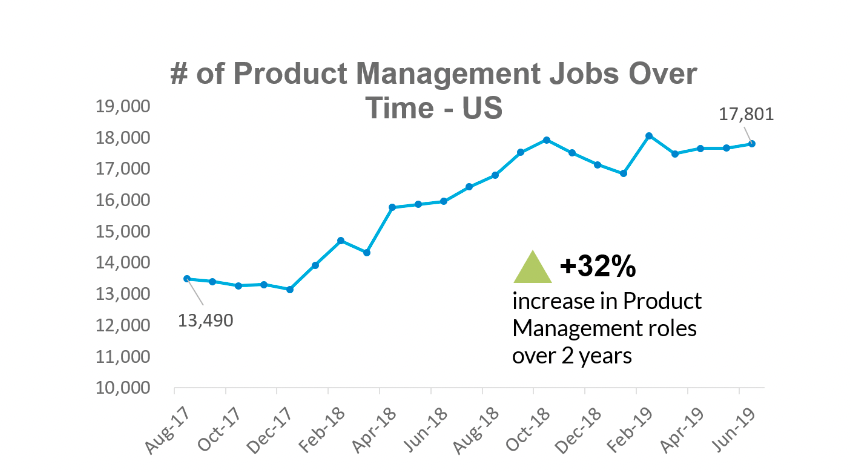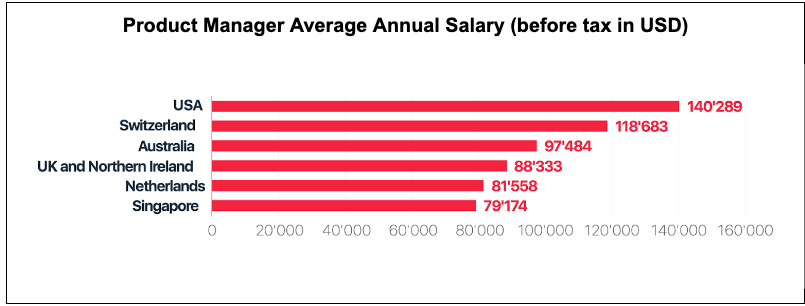In the years leading up to the pandemic, there was already a notable increase in demand for product managers. And as organizations pivoted to digital spaces, this hunger for product management expertise grew ravenous. Organizations across sectors invested much in the way of building out product teams. In a remote work environment, the demand for product managers has increased.
At their core, companies share some basic commonalities. They want to grow and innovate and remain relevant as the landscape evolves. Moreover, they continue to seek to understand and solve new problems as customer behaviors change. Certainly a tall order in normal times. But to accomplish all of this during a global crisis while reframing and reimagining themselves in a post-pandemic market? For many organizations, the answer can be summed up in two words: Product managers.
Let’s take a look at what’s behind the steady increase in the demand for product managers.
Ramping Up to Meet an Unprecedented Demand
In late summer of 2021, Product School announced that it had raised $25M in growth equity to scale its product training platform.
Product School draws its teaching muscle from product leaders at companies like Netflix, PayPal, Google, and Amazon. (These companies, as well as many other recognizable names, also show up on Product School’s client list.)
So when a product management organization bursting with more than a million members—the largest community of PMs in the world—ramps up its growth equity to scale its product training platform, You know the product management landscape is shifting in a big way.
Here’s why:
“The growth funding for the company comes after bootstrapping since 2014, in large part because product managers (PMs) are no longer needed just inside tech companies but have become sought after across almost virtually all industries.”
According to CEO Carlos Gonzalez de Villaumbrosia, Product School plays a significant role in “unlocking value for product teams.” Moreover, the goal of the program is to“help define the future” of product management.
For Clement Kao, co-founder of Product Manager HQ, another organization that provides product management training and runs the world’s largest online Slack community for product managers, “it’s critical for organizations to look for growth product managers,” specifically, because they “enable the business to grow in a sustainable fashion and enable their users to attain superpowers much more quickly.”
But what does a growth product manager do, exactly?
Growth PM Explainer
Within the general rise in demand for product managers, there’s a notable (and not surprising) uptick in the introduction of growth product managers within organizations, like Airbnb, Twilio, Segment, Noom, and Square.
We see the rise in demand most often in companies that have embraced the idea of product-led growth, a business strategy in which the product “sells itself” through experienced value. The product is, in fact, the main tool to acquire customers.
But with so many interpretations of the general product manager role, how do you define a growth project manager?
A growth PM (or product growth manager) focuses on improving a specific business metric or goal. These metrics may be acquisition, activation, retention, referral, or revenue.
Some growth PMs have a strong advantage of working with a dedicated cross-functional team of engineers, analysts, and designers. They strategically prioritize initiatives, nail down experiments, and define measurements. Solo-flying growth PMs who operate without a dedicated team have to double down on making a solid business case. This allows them to open the door to company resources impacted by a prioritized initiative.
Of course, like traditional PMs, a growth PM is still concerned with solving customer problems; however, initiatives that drive the most significant business outcome are prioritized for a growth PM.
A growth product manager’s primary stakeholder is the business itself. Therefore, the focus is always on delivering measurable business outcomes via short-term improvements. Growth PMs must deeply understand customer problems to prioritize initiatives. For example, they may remove value barriers and deliver the organization’s greatest impact.
Understanding the Increased Demand for PMs
Nathan Thomas from the Product School sums up the rapid rise in demand like this:
“This is a time of extraordinary challenge and extraordinary opportunity. Faced with a global pandemic, companies have been forced to change almost every aspect of how they operate. Aiding them in making these changes are technical innovations that would have been unimaginable mere years ago.
Certainly, Covid created an unprecedented surge in the demand for PM training and certification. The transition to a remote work environment led to an increase in the demand for product managers.
There were a few key factors driving the demand for PMs. These demands can be broken down into the 3 Cs: competition, cycle, and customers. The crowded market was teeming with competition. The increase in competition resulted in a breakneck pace to get products to market quicker. This, in turn, led to higher customer expectations.
In August 2020, Glassdoor ranked a product management position as the 4th best job in the US with a total of 12,173 listings.
It doesn’t hurt that the global average annual survey for a PM in 2020 was $110,916 USD. (The average annual salary in the US was $140,289, according to a recent Product Management Festival survey.) A six-figure salary is definitely a significant enticement to draw new folks to the PM role.
Credit: Product Management Festival survey 2020
Writing about the rise in demand, PM Neal Iyer calculates that “product management roles in the US have grown an astounding 32% over just a ~2 year period from Aug 2017-Jun 2019.”

Credit: “Incredible growth in demand for Product Managers in the US but not necessarily in the places you’d expect” by Neal Iyer.
Iyer and others point out that this surge in demand for PMs comes from beyond the expected tech sector. According to Iyers, the key drivers for growth in demand of PMs fall into three categories:
- “Strong growth in e-commerce roles, led by incumbents and the continued digital transformation of traditional brick and mortar retailers.” (e.g., Amazon and Home Depot)
- “Increase in financial sector roles led by banks and credit card companies with a push for new digital-first financial instruments.” (e.g., Bank of America, Visa, MasterCard)
- “Moves towards developing product practices by top services firms in the management consulting and financial advisory space.”
According to Product School’s CEO: “The lesson is simple and intuitive: When everything is a product, then every company needs a product manager.”
“Exponential growth like this is rare and just goes to show how the role has adapted to emerging technology to the point where every department in every business is bursting at the seams to get talented product professionals through their doors,” says Stella Shkreli, product consultant at Xcede, adding that growth and strategy are key influencers.
Final Thoughts
While the uptick in demand for product managers predates the pandemic, the pandemic itself brought into sharp focus the dire need for companies to have strong product leaders at the helm to drive product development and growth across any landscape.
Now that we are teetering on the cusp of a post-pandemic world, there has never been a greater need—or demand—for product managers to successfully build and launch the next products that will transition companies successfully into a post-pandemic world. And those companies will look to the Product Schools of the world to train and certify the army of PMs who will lead the cause in every imaginable way.
Ready to scale your product team? Request our ebook for insights on scaling effectively with product operations.




